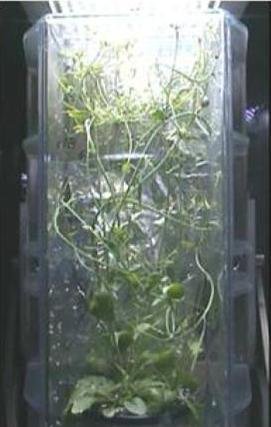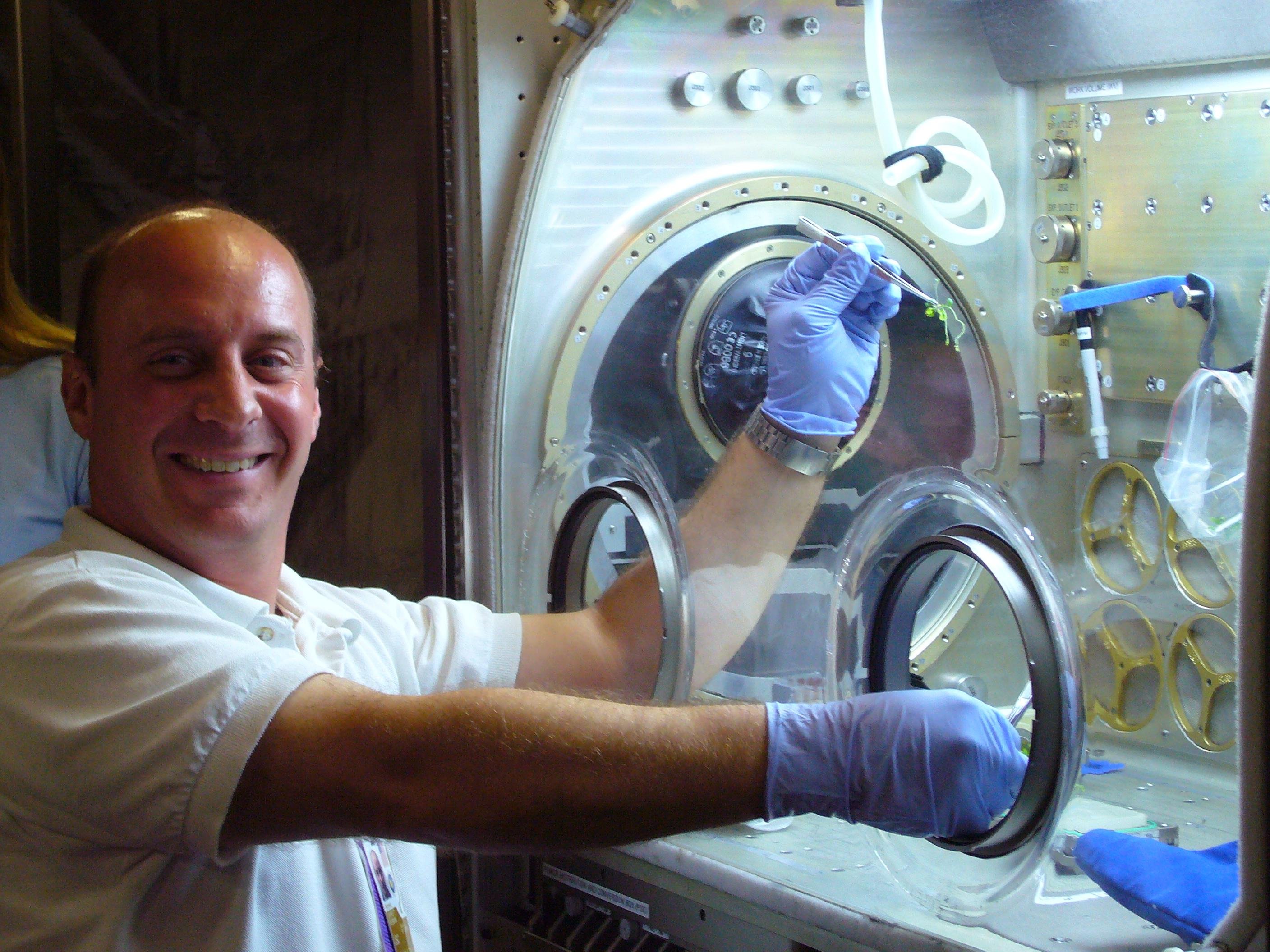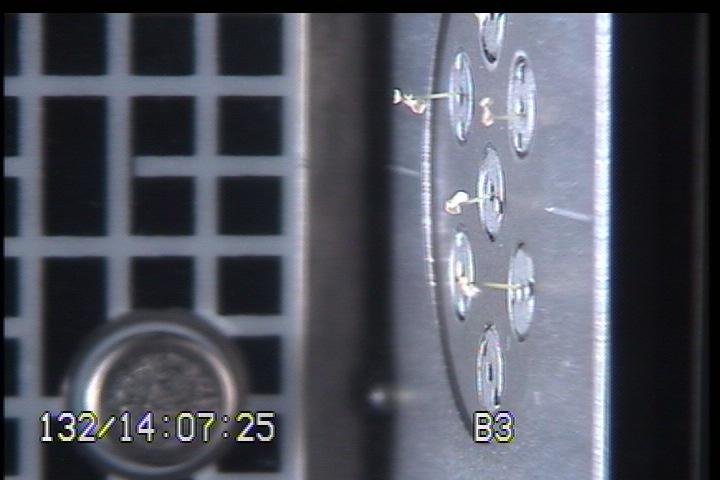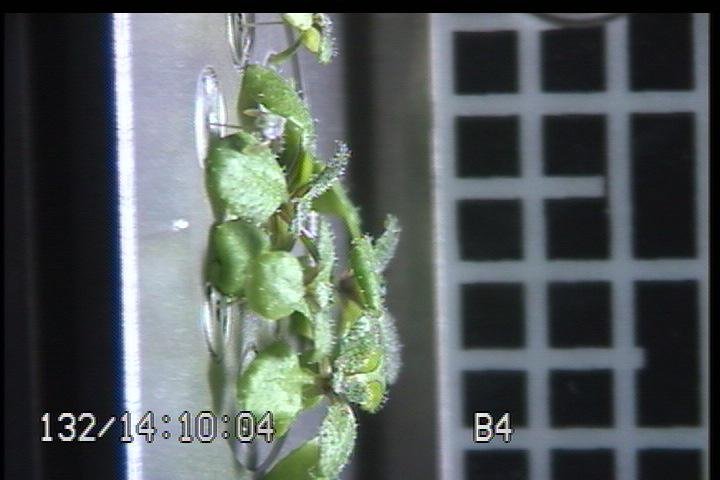- completed
[Resist Wall]
Role of Microtubule-Membrane-Cell Wall Continuum in Gravity Resistance in Plants
- Biology and Biotechnology
ISS Science for Everyone
SCIENCE OBJECTIVES FOR EVERYONE
The Role of Microtubule-Membrane-Cell Wall Continuum in Gravity Resistance in Plants (Resist Wall) investigation was conducted to determine the importance of the structural connections between microtubules, plasma membrane, and the cell wall as the mechanism of gravity resistance. The results of this investigation support future plans to cultivate plants on long-duration exploration missions.
SCIENCE RESULTS FOR EVERYONE
Silkworm eggs are kept on the International Space Station for three months, then placed in either normal or microgravity for six days to resume embryonic development. The results show that microgravity does have an effect on egg development. Eggs are also exposed to radiation. No mutations are seen in the first generation of worms, but are present in the second and third generations, indicating that cosmic rays apparently damage the genes in the first generation and this gets passed down to later generations. Gene silencing, or deactivating, data indicate that individual eggs experienced variations in dose and type of cosmic ray, which means that researchers need to examine radiation’s effects at an individual level not the group as a whole.
Experiment Description
RESEARCH OVERVIEW
- The Role of Microtubule-Membrane-Cell Wall Continuum in Gravity Resistance in Plants (Resist Wall) examined the role of microtubule-plasma membrane-cell wall continuum (a collaboration between plant elements to maintain structure) pertaining to gravity resistance in Arabidopsis thaliana plants (small plants of the mustard family); and clarified the mechanism of gravity resistance, which is an essential response for plant development against a gravitational force.
- Upon return to Earth, the properties of harvested plant stem material were evaluated by scientists to analyze the effects of 1G and microgravity on the cell wall and supporting tissues.
- Experience with plant growth related to microgravity environments is basic research that is relevant to planning plant cultivation studies concerning future long-duration space exploration missions.
DESCRIPTION
The Resist Wall investigation examined the resistance to gravitational force in Arabidopsis thaliana plants. Ground studies indicated that structural or physiological continuum of microtubule-plasma membrane-cell wall is responsible for gravity resistance. Resist Wall aimed to prove this hypothesis by examining A. thaliana plants on the International Space Station (ISS).
Under hypergravity conditions, the unfavorable phenotypes were intensified and exhibited a low viability. However, it was highly expected that the defects of such mutants would be rescued and could grow and develop normally as wild types in microgravity, where formation of the tough cell wall is not required. To confirm this expectation, mutant strains were cultivated under microgravity and at 1G conditions on the ISS up to the reproductive stage. Phenotypes concerning growth and development were compared using video images. Also, using plant materials frozen on orbit and on Earth, analysis was performed to assess changes in expression of genes involved in formation of microtubules, plasma membrane, cell walls, and levels of related cellular components.
The Resist Wall investigation tested four strains of A. thaliana; the wild type (normal function of microtubule-associated proteins), lefty (showed disordered growth patterns on Earth), hmg1 (defective in formation of cortical microtubules) and gene modified wild-type (Promoter GUS (glucuronidase) introduced).
Resist Wall operations occurred in the European Modular Cultivation System (EMCS) facility; a multi-user experiment facility for biological investigations under microgravity. EMCS allows cultivation, stimulation and crew assisted operation of biological experiments under well controlled conditions. The Plant Cultivation Chamber (PCC), which was developed for the Multigen experiment, was installed in standard Experiment Containers (EC) of the EMCS and referred to as the Resist Wall Flower Pot. The Resist Wall Flower Pot is a chamber where plant seeds grow to mature plants and produce legumes with new seeds. Resist Wall is a cooperative investigation between the European Space Agency (ESA), Japan Aerospace Exploration Agency (JAXA) and National Aeronautics and Space Administration (NASA).
An alpha-tubulin (principal protein component of tiny fibers that are basic to DNA structure) gene of Arabidopsis (tua6), which is a structural constituent of cytoskeleton, is responsible for encoding an alpha-tubulin isoform (a form of a protein with slightly different amino-acid sequences) required for right handed helical growth. Under microgravity conditions, seeds of the tua6 mutant were shown to germinate and grow normally until they reached the seedling stage.
Once the experiment was complete, the samples were returned to Earth and analyzed for changes in expression of genes involved in the formation of microtubules, plasma membrane, cell walls, and levels of related cellular components.
Media Gallery





Applications
SPACE APPLICATIONS
The Resist Wall experiment aimed to explore the molecular mechanism by which the cell-wall construction of supporting tissues in land plants is regulated via gravity signal, which can benefit space explorers.
EARTH APPLICATIONS
Data gathered from the Resist Wall study will further the understanding of how plant growth and development at a molecular level can lead to significant advancements in agricultural production on Earth.
Operations
OPERATIONAL REQUIREMENTS AND PROTOCOLS
Resist Wall was designed to operate using pre-existing Experimental Unique Equipment (EUE) from the Multigen experiment, referred to as the Resist Wall Flower Pot. Eight Resist Wall Flower Pots required installation into EMCS; 4 on rotor A which rotated at 1G and 4 on rotor B, which did not rotate. The Resist Wall flower pots required watering and automated image acquisition daily, which was provided by the EMCS. The crewmembers were required to provide on-orbit support by checking the EMCS daily for nominal operations. Cultivation of these plants lasted approximately 33 to 53 days at 23 degrees Celsius requiring 16 hours of light and 8 hours of dark daily. The EMCS contained 60 percent humidity with 0.03 percent carbon dioxide. After the plants reached a length of approximately 10 cm, the Resist Wall Flower Pots were removed from the EMCS and placed inside the Microgravity Sciences Glovebox (MSG), to prepare the plant material for harvesting. Crewmembers were required to divide, preserve and store the samples per a cue card provided by the Resist Wall investigators.
The crew provided on-orbit support by checking the EMCS daily for nominal operations. Crewmembers divided, fixed and stored the samples using the Kennedy Space Center Fixation Tube (KFT); a system designed to contain plant or other small biological samples during flight and to chemically fix and stain tissue samples.
The KFTs provided three levels of containment for the chemical fixative during stowage and operations. After cultivation, all plant stems were harvested and inserted into KFTs and Ziploc bags. Samples were stored in KFTs containing either RNAlaterTM (aqueous, non-toxic tissue and cell collection reagent that stabilizes and protects cellular RNA in intact) and stowed at -35 degrees Celsius; or KFTs containing formaldehyde and stowed at +2 degrees Celsius. The remaining stems were stored in Ziploc bags and placed inside the Minus Eighty Laboratory Freezer for ISS (MELFI) at -95 degrees Celsius. Once the experiment was completed, the samples were returned to Earth for analysis
Publications
PRINCIPAL INVESTIGATOR(S)
HOSON Takayuki [Osaka City University]
Unless specified otherwise, rights to all images belong to ©JAXA



